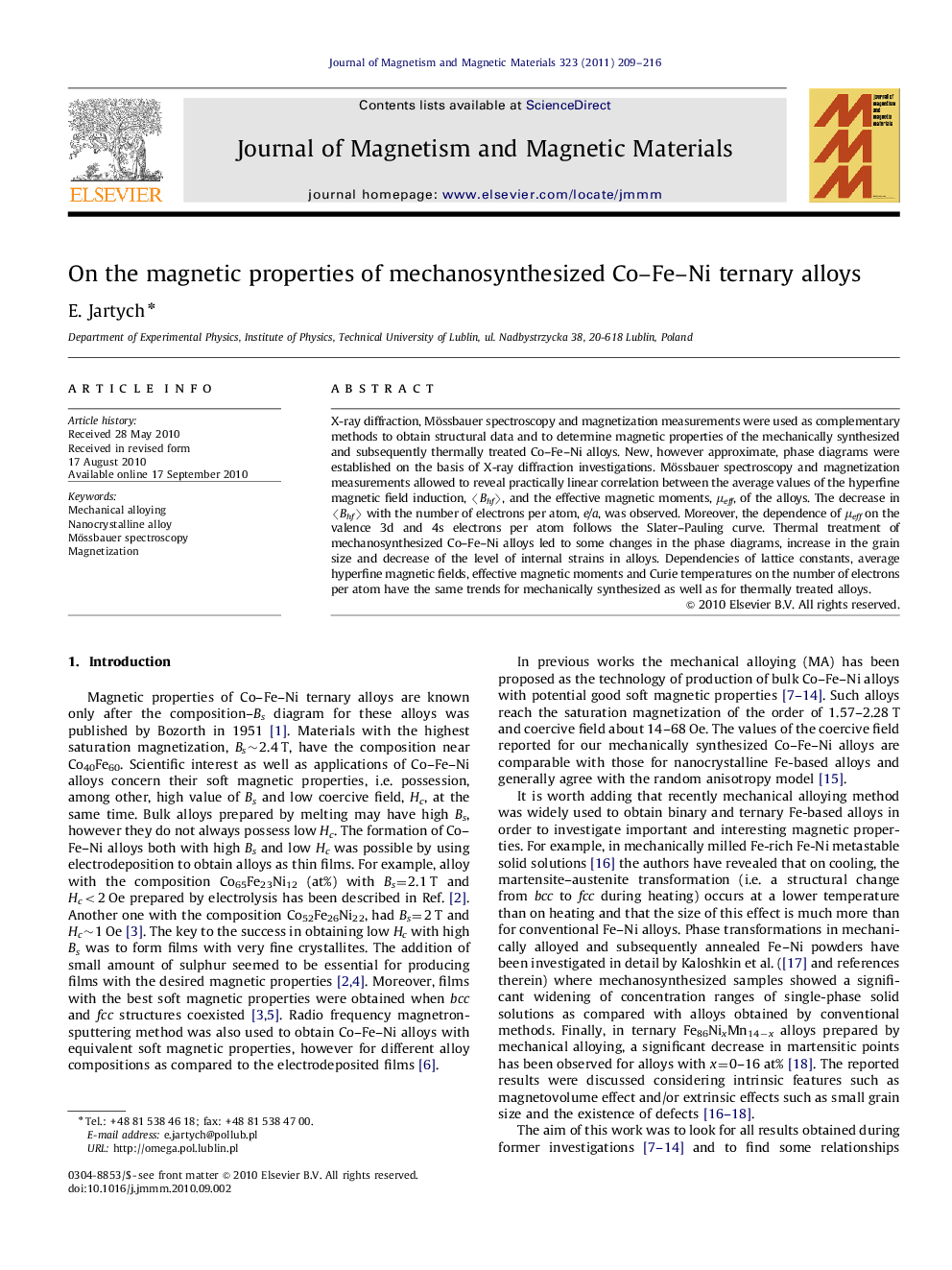| Article ID | Journal | Published Year | Pages | File Type |
|---|---|---|---|---|
| 1801929 | Journal of Magnetism and Magnetic Materials | 2011 | 8 Pages |
X-ray diffraction, Mössbauer spectroscopy and magnetization measurements were used as complementary methods to obtain structural data and to determine magnetic properties of the mechanically synthesized and subsequently thermally treated Co–Fe–Ni alloys. New, however approximate, phase diagrams were established on the basis of X-ray diffraction investigations. Mössbauer spectroscopy and magnetization measurements allowed to reveal practically linear correlation between the average values of the hyperfine magnetic field induction, 〈Bhf〉, and the effective magnetic moments, μeff, of the alloys. The decrease in 〈Bhf〉 with the number of electrons per atom, e/a, was observed. Moreover, the dependence of μeff on the valence 3d and 4s electrons per atom follows the Slater–Pauling curve. Thermal treatment of mechanosynthesized Co–Fe–Ni alloys led to some changes in the phase diagrams, increase in the grain size and decrease of the level of internal strains in alloys. Dependencies of lattice constants, average hyperfine magnetic fields, effective magnetic moments and Curie temperatures on the number of electrons per atom have the same trends for mechanically synthesized as well as for thermally treated alloys.
